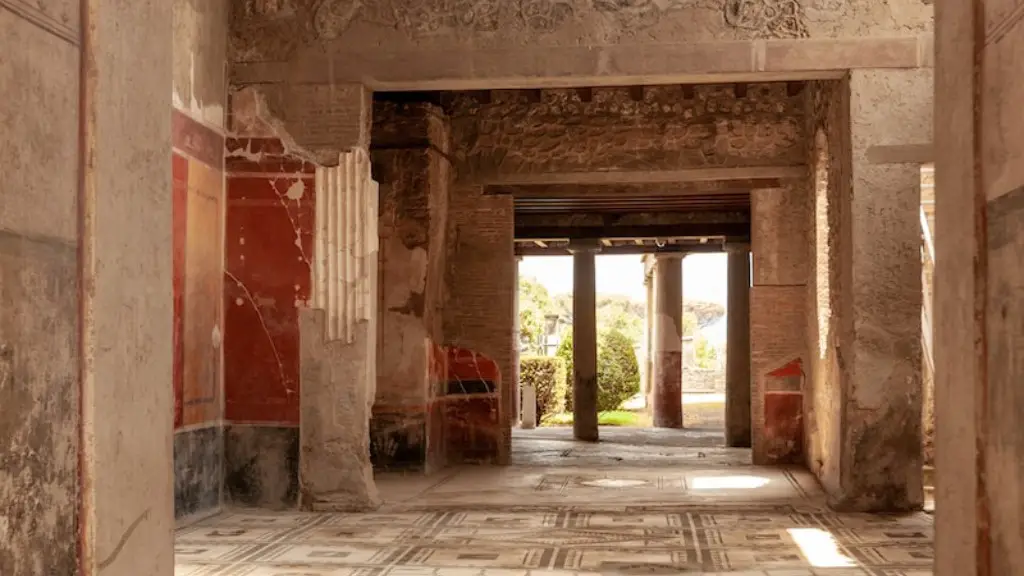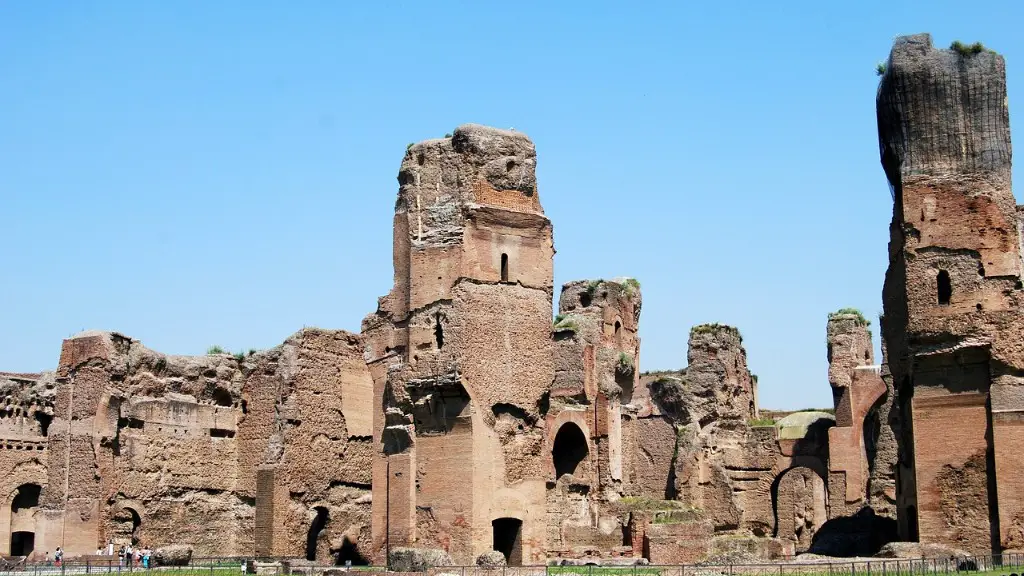In Ancient Rome, flammable materials were used for a wide range of purposes. These materials, such as pitch, tar, and wax, were not only used to light fires but were also used to caulk ships, create cooking vessels and storing containers, and even treat wounds. The ancient Romans developed sophisticated methods for refining and managing these materials, as well as a number of techniques for using them safely. As such, the use of such materials was a key part of daily life.
Pitch and tar were two of the most commonly used flammable materials in Ancient Rome. These substances were primarily used to caulk the hulls of boats and ships, as well as to waterproof containers and other objects, and to create seals around doors and windows. Pitch and tar were also used extensively in the making of weapons and armor, as the compounds were durable and highly inflammable.
Aside from pitch and tar, wax was also a highly sought-after flammable material in the ancient world. This substance was used to make candles and lamps, as well as to lubricate certain metals. Wax was also used in the making of furniture, and was even used in the treatment of wounds. The ancient Romans had developed a variety of techniques for collecting, refining, and using wax safely. As such, wax was an incredibly important material.
The use of flammable materials in Ancient Rome was widespread. While the most commonly used materials were pitch, tar, and wax, a variety of other materials were also commonly used. Some of these materials, such as sulfur and bitumen, were used to create incendiary weapons, while others, such as lamp oil, were used for illumination. In addition, a number of materials were also used to create dyes, paints, and other similar products.
As well as being used in a wide range of practical applications, flammable materials were also of great religious significance in Ancient Rome. This is due to the fact that such materials were often used in rituals and ceremonies, such as those celebrating the gods. As such, the use of flammable materials was deeply entwined with the religious beliefs of the ancient Romans.
The use of flammable materials was an integral part of life in Ancient Rome. While such materials were used for a variety of practical applications, they were also used for religious ceremonies and other rituals. As such, it is clear to see why flammable materials were so important in the ancient world.
Production of Oil
The production of oil was also an integral part of Roman culture. This was due, in part, to its use in a variety of applications. For instance, oil was used to light torches, lamps, and even ovens. Oil was also used to waterproof various objects and structures, and was a key ingredient in the Roman system of medicine. As such, it can be seen that oil was an important resource in Ancient Rome.
The production of oil in the Roman Empire was a complex process and required the use of a variety of materials and tools. These materials included olive oil, beeswax, tallow, pitch, and other binders. In addition, the process also relied heavily on the use of heat, barometric pressure, and catalysts. These materials, tools, and techniques were highly developed and were often used in combination with each other.
In addition to being used in a variety of applications, oil was also of great religious significance in the Roman world. This was due to the fact that oil was often used as an offering to the gods. As such, oil was often considered to be a sacred substance, and it was not uncommon to find it used in religious ceremonies.
The production of oil was an integral part of Roman society and culture. This is due to the fact that oil was used in a variety of applications. It was also of great religious importance, as it was often used in ceremonies and rituals. As such, it is clear to see that oil was an important resource in the ancient world.
Distillation of Wine
The distillation of wine was another important technique in the production of flammable materials in Ancient Rome. Wine was first distilled into a liquid called “alcohol” or “aqua vitae”, which was then used to make oils and spirits. This process was carried out in large basins, and consisted of heating the wine and collecting the vapors that were produced. This vapors were then condensed and collected in containers, and the resulting liquid was then used to make oils and spirits.
Distillation was an important process in the making of various flammable materials, as well as in the making of medicinal products. For example, the distillation of wine was often used to produce a liquid referred to as “aqua vitae,” which was commonly used in the treatment of various ailments. Additionally, this process was also used in the production of perfumes and incense, as well as in the creation of waxes and oils.
The distillation of wine was not only used in the production of flammable materials, but it was also of great religious significance. This is due to the fact that wine was often used in religious ceremonies and rituals. As such, it can be seen that the distillation of wine was an important process in the ancient world.
The distillation of wine played an integral part in the production of flammable materials in Ancient Rome. This process was used in the production of various oils, spirits, and medicinal products. Additionally, the distillation of wine was also of great religious significance, as it was often used in religious ceremonies and rituals. As such, it is clear to see why the distillation of wine was so important in the ancient world.
Sulfur and Bitumen
Sulfur and bitumen were two of the most important flammable materials used by the ancient Romans. These materials were used in the making of weapons, armor, and tools. They were also used for a variety of other applications such as waterproofing, sealing, and lubricating. In addition, sulfur and bitumen were also commonly used to create dyes, paints, and other similar products.
The production of sulfur and bitumen was a complex process that required the use of a variety of raw materials, tools, and techniques. These materials included coal, wood, oil, and other combustibles. The process also required the use of heat, pressure, and catalysts, as well as a variety of other techniques. As such, it can be seen that the production of sulfur and bitumen was highly developed in the ancient world.
In addition to being used in a variety of practical applications, sulfur and bitumen were also of great religious significance in the Roman world. This is due to the fact that these materials were often used in religious ceremonies and rituals. As such, the use of sulfur and bitumen was deeply entwined with the religious beliefs of the ancient Romans.
Sulfur and bitumen were two of the most important flammable materials used in Ancient Rome. These materials were used for a variety of practical applications, as well as for religious ceremonies and rituals. As such, it is clear to see why such materials were so important in the ancient world.
Lamp Oil
Lamp oil was another important flammable material in Ancient Rome. This substance was mainly used in lamps, as a means of providing illumination. Lamp oil was also used in the making of candles, as well as in the making of lamps and lanterns. In addition, lamp oil was also used in a variety of other applications, such as in the making of dyes and paints.
The production of lamp oil was a complex process that required the use of a variety of raw materials and tools. These materials included beeswax, tallow, pitch, and various binders. The process also relied heavily on the use of heat and pressure, as well as catalysts. As such, it can be seen that the production of lamp oil was highly developed in the ancient world.
Lamp oil was not only used for practical purposes, but it was also of great religious significance in the Roman world. This is due to the fact that it was often used in religious ceremonies and rituals. As such, lamp oil was often regarded as a sacred substance, and was not uncommon to find it used in religious ceremonies.
Lamp oil was an important flammable material in Ancient Rome. This material was used for a variety of practical applications, as well as being of religious significance. As such, it is clear to see why lamp oil was such an important material in the ancient world.





